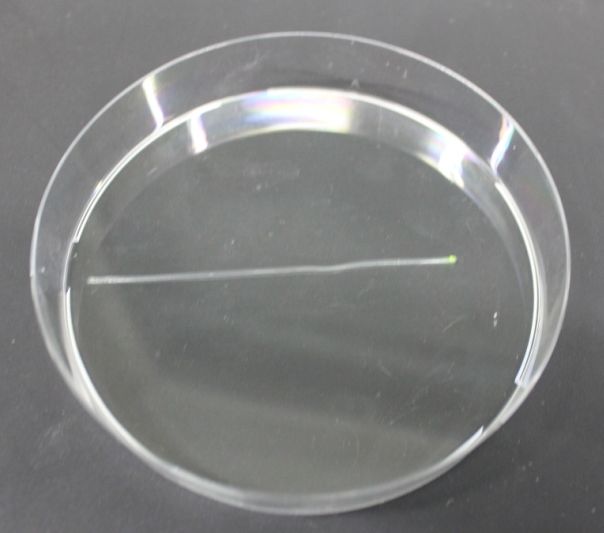Team:ETH Zurich/Process/Microfluidics
From 2011.igem.org
(→Microfluidic channel without flow) |
(→Microfluidic channel without flow) |
||
| Line 47: | Line 47: | ||
{|style="border: none;" align="center" | {|style="border: none;" align="center" | ||
|valign="top"|[[File:ChannelPhoto.jpg|400px|center|thumb|'''Photo of the channel in action.''' The channel (the long thin tube at the right) is physically attached to a reservoir filled with the sample medium containing acetaldehyde or xylene (the Eppendorf tube at the lower left). In the case of acetaldehyde, the whole setup is packed in an impermeable plastic bag to significantly reduce the vaporization of acetaldehyde (not shown).]] | |valign="top"|[[File:ChannelPhoto.jpg|400px|center|thumb|'''Photo of the channel in action.''' The channel (the long thin tube at the right) is physically attached to a reservoir filled with the sample medium containing acetaldehyde or xylene (the Eppendorf tube at the lower left). In the case of acetaldehyde, the whole setup is packed in an impermeable plastic bag to significantly reduce the vaporization of acetaldehyde (not shown).]] | ||
| - | |valign="top"|[[File:ChannelBlank.jpg|400px|center|thumb|'''After the experiment, the | + | |valign="top"|[[File:ChannelBlank.jpg|400px|center|thumb|'''After the experiment, the agarose gel containing the cells is removed from the tubing.''' The bald interior of the channel is placed on a petri dish (see picture) and analyzed under a fluorescence microscope.]] |
|} | |} | ||
|} | |} | ||
Revision as of 02:05, 22 September 2011
| Microfluidics |
| ||
|
We relatively early figured out that we need some kind of channel to establish the acetaldehyde or xylene gradient required for SmoColi (see Circuit Design). However, there were several different possible channel designs, and the final design evolved through an iterative series of design steps and design validations. The first designs were validated based on vast simulations, the final design furthermore by biological experiments in the lab (see Systems Validation). | |||
Initial Channel DesignsMicrofluidic channel with flow and recycling of the mediumWe came up with two different possible microfluidic channel designs, both involving a flow of toxic molecule in medium through the channel:
A problem with both of these designs is that for the AHL-based RFP alarm to work, recycling of the flow back into the channel would be required. Since the tubing and pumps would have very high volumes compared to the channel volume, the AHL signal would be diluted to the point where no detection is possible anymore. Also, several pumps would be required to accomplish this, further complicating the process design and making it more error-prone. |
 "
"





